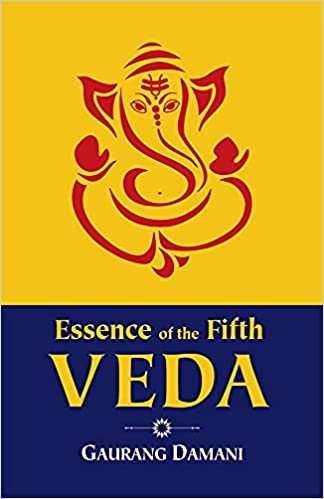|
Listen to article
Getting your Trinity Audio player ready...
|
India’s spiritual and scriptural heritage derives from the Vedas, the word Veda meaning wisdom, knowledge or vision. A correlation of archaeological, literary and astronomical evidence suggests that the Vedas date back to at least 6000 BCE, which makes the Vedas the world’s most ancient texts. The fact that India was home to the Vedic civilisation for at least the last eight millennia if not earlier, has effectively laid to rest many foreign inspired versions of India’s past, most significantly the myth of the so-called Aryan invasion!
The Vedas, being the original source of Hindu teachings, delve on all aspects of life. It is no surprise then that the followers of Sanatana Dharma have always viewed the Vedas as the highest religious authority. The laws of the Vedas have regulated and continue to regulate the social, legal, domestic and religious customs of Hindus up to the present day. All the obligatory duties of Hindus at birth, marriage, death etc. are guided by Vedic rituals. For mankind in general, they also serve as a repository of wisdom. Classified into four volumes: the Rig Veda, the Sama Veda, the Yajur Veda and the Atharva Veda, it is the Rig Veda which serves as the principal text, with the four Vedas collectively being known as “Chathurveda”. Each Veda, in turn, consists of four parts—the Samhitas (hymns), the Brahmanas (rituals), the Aranyakas (theologies) and the Upanishads (philosophies). As the Upanishads form the concluding portions of the Veda, they are called the “Vedanta” or the end of the Veda. They contain the essence of Vedic teachings.
The Vedas have been passed on from generation to generation through word of mouth and form the basis of Sanatana Dharma. This foundation is hence called Shruti (that which has been heard) and the walls of this structure are called Smriti (that which has been remembered). While the Shruti and Smriti are the walls and foundation of Sanatana Dharma, there are two other important supports—the Puranas and the Itihasa. The word ‘Purana’ is Sanskrit for something that is ancient. The Puranas consist of ancient histories, stories and allegories, which have been composed for the lay public and for those that could not study the Vedas. The Itihasa refers to the collection of written accounts of events that were witnessed by the author and signifies traditional history, (literally meaning, thus it happened). In the Indian tradition, both the Ramayana and the Mahabharata, two of India’s most sacred texts are considered as Itihasa. In the case of the former, Sage Valmiki, who composed The Ramayana was himself a witness to the events as they unfolded. Similarly, Veda Vyasa, who composed The Mahabharata, witnessed the events as they unfolded. These great Indian spiritual texts fall under the category of Itihasa and Smriti literature. The Puranas, eighteen in number, cover a diverse range of topics from legend to mythology, cosmogony, genealogies, etc. The Itihasa (Ramayana and Mahabharata) and Purana are collectively sometimes referred to as the Fifth Veda. In this delightful book written by Gaurang Damani, stories from these two sacred texts are recounted in a readable fashion, which serves as a primer to understand India’s scriptures.
The book is laid out in a story format, in three main chapters. The first of these chapters, titled Tirupati Balaji and Ramayana, dwells on stories from the Ramayana. Starting with Shri Rama’s lifting of the celestial bows, the 14 stories in this chapter dwell on various facets of the Ramayana, the last of which is The Philosophy of Yoga ‘Vasishtha’. The second chapter has nine delightful stories on Krishna. His miracles as a child in Vrindavan, Rasa Lila, His travels and why Krishna had 16,108 wives are all covered in this chapter, in an easy to read and understand format. The final chapter delves on the Mahabharata, in 21 short stories, covering the reasons for this epic battle and expounding on the code of Dharma, which can be subtle at times. Most importantly, the three chapters, through these well laid out stories, brings out not just the Itihasa of those times, but the moral code by which it is necessary to live our lives to attain fulfilment.
It is a telling indictment and commentary of post-independence India that religious and ethical instruction based on Hindu scriptures is not imparted to children in our schools. Most Hindu children thus grow up without an adequate understanding of their scriptures and the rich moral and ethical code that they espouse. This book, to some extent, provides the lay public with an authentic account of our great epics through these short stories, which also bring out the essence of Dharma. Hopefully, this should spur the parents to delve deeper into the foundations of Sanatana Dharma, so that they and their progeny, grow up as better citizens.
For Gaurang Damani, the author of this book, it has apparently been a labour of love. This is but the first book, which is a blend of the Itihasa and the Purana. In his next book, the author aims to help the reader go deeper within, based on the prescribed Vedic path to happiness and spirituality. The book, while easy to read and understand, could have had a greater impact with more subtle editing, which could have made it a gripping read. But even so, it is a valuable work on our Itihasa, which is strongly recommended for all, both adults and school children, to enable a better understanding of India’s rich scriptural and spiritual ethos.







Add comment